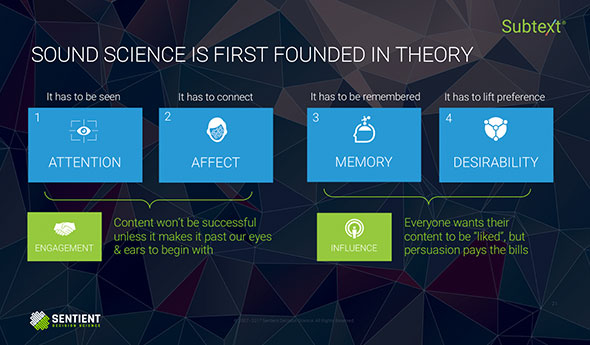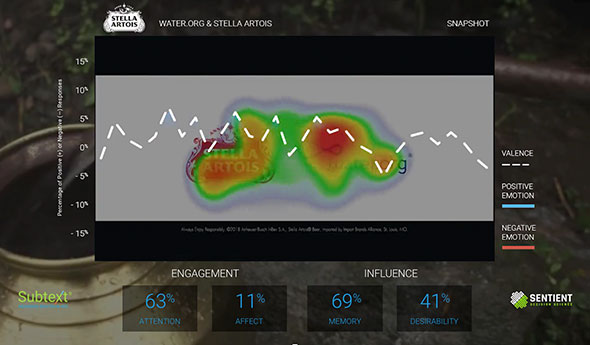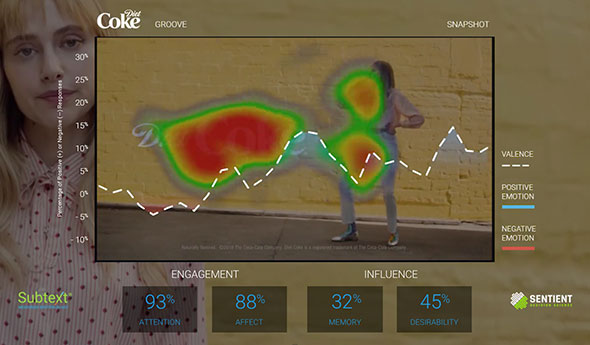The Fastest Way to the Deepest Insights: The Automation of Behavioral Science
The Nature of Automaticity
When I was in graduate school I read an article that changed my thinking about how the mind works. It was called “The Unbearable Automaticity of Being.” by Tanya Chartrand and John Bargh. In the article they reveal evidence of how the mind forms associations automatically, and how the automatic activation of associations can lead directly to behavior without conscious control.
Five years later, Strack and Deutsch published “Reflective and Impulsive Determinants of Social Behavior.” A dual process theory of cognitive processing, better known today as System 1 and System 2. Of course, we all know System 1 and System 2 references from Kahneman’s popular book Thinking Fast and Slow, a review of the last 40 years of decision science research, published in 2011. In fact, the theory is so compelling that in 2017 Brain Juicer decided to re-brand as the System 1 agency.
Here, I want to start with System 1. System 1 processing refers to the automatic rise and spreading activation of associations in the non-conscious mind. Stimuli automatically activate emotional associations in your mind. That is one of the functions of emotion. It is a memory cementing mechanism – and it’s highly adaptive.
Automating a behavioral response allows us to navigate our world more efficiently. Imagine if you had to “think” about what to do when you saw a snake slithering toward your feet. Or if you had to reflectively “decide” whether to comfort a crying baby. We would have decision paralysis. We wouldn’t be able to navigate our environment.
Automaticity Enables Empathy
We’re going to make the following argument: Automaticity in the human mind give rise to Sentience. Sentience is the foundation for human empathy. Automaticity enables empathy.
See, automaticity isn’t a nice to have – it’s a requirement for higher order cognition. Automaticity in the human mind frees up resources for higher level thinking. It gives us the luxury of sentience.
This is true not just for automaticity in the human mind, but also any kind of automation. Automation frees up resources. And the automation of market research processes, frees up our insights resources for higher level thinking. It frees us up to engage in deeper processing of data and deriving meaning for our client. It enables us to have greater empathy for the consumer and for our clients.
Automation in Market Research
Examples of this abound in our industry. Survey platforms, like Decipher, have automated the construction of question types and survey instruments. Data display companies, like Dapresy, have automated the graphic display of data off raw data files. Zappistore is in the business of automating full market research studies from design, to sample supply, to data collection and results presentations. And companies, like BERA, have even automated advanced analytics like regression based drivers analyses on syndicated data and the display of those analyses in automated dashboards.
These are all highly important advances, and they do exactly what automation is intended to do: they free up our resources to focus on insights for our clients.
But there’s a problem: The vast majority of the automation just described is processing conscious, self-reported data.
Wait! We’ve known for years that our industry is suffering from the can’t say won’t say problem. That is we can’t rely solely on what consumers are willing and able to admit to us in surveys. It’s exactly this can’t say/won’t say problem that leads us to deliver inadequate insights on the true drivers of consumer behavior to our clients.
See, this is the problem. We can’t simply accelerate the delivery of inadequate insights and expect to maintain our influence within the boardroom. But with this problem also comes an opportunity. And the opportunity is defined where the two primary trends in market research intersect: the automation of behavioral science.
The Automation of Behavioral Science
Fortunately, this is already happening in our industry. The automation and global scaling of eye-tracking methods has seen the production of incredible technology from companies like Sticky (recently acquired by Tobii) and EyeSee. Algorithms for detecting emotional expression in the face have led to globally scaled Facial Coding technology from companies like EyeSee, Affectiva and RealEyes. And Sentient Prime implicit research technology has taken implicit association testing out of the lab, put it online and on mobile devices so we can now measure human automaticity in the mind anywhere in the world.
These too are great advances for our industry. But here, I want to take us one step further.
Beyond Cool Measures: Automating Research to have a Lasting Impact
We’re putting forth the argument that cool measures, the automation of individual behavioral science techniques, is not enough. We need to turn these techniques into systematic research approaches that are founded in sound scientific theory.
When you look at the advanced research approaches over the last 10-20 years that not only broke through but that had staying power, you’ll see that they have sound theory as their basis. And this theory is independent of the measures used to test it. For example, TNS Needstate analysis, this is founded in a fundamental theory of how human connections are made. The measures within it could use updating, but the theory is strong and has staying power and the product has had a big impact on our industry. FaceTrace from BrainJuicer, when it came on the scene had a significant impact on shifting attention to the measurement of emotion. Now the measure itself is rather blunt, and certainly subject to conscious control, but the approach is based in sound theory, Paul Ekman’s 7 human universal emotions. And that foundation (along with great marketing) has given that research approach staying power.
But what if we didn’t have to choose between good theory and cool new measures? What if we could combine the two? Could we produce research products that were automated, provided deep accurate insight, and had staying power in the industry? We argue that, yes, we can. And here is an example.
Subtext: Measuring Emotion in Advertising
When consumer neuroscience burst onto the scene about ten years ago, the feeling was that we should throw out all the old methods and ways of thinking about advertising effectiveness because we were now measuring the actual brain reaction of consumers.
But there is a difference between measures and theory. We should keep the theories that produce replicable results, and we should attach more and more advanced measures to the capture the principles of those foundational theories.

As an example, let’s look at Subtext, Sentient’s research product for optimizing and quantifying the impact of advertising. The research product is founded in the Attention, Affect, Memory and Desirability model of advertising effectiveness. But it goes one step further and attaches the most advanced research techniques to measure an ad’s effectiveness at each step of that model.
For Attention, we use automated eye-tracking to capture attentional engagement with the ad. For Affect, we use automated facial coding to capture moment by moment emotional reaction to the ad. For Memory, we use Sentient Prime to capture change in memory structures around a brand following exposure to an ad. For Desirability, we use a model of combined emotion and reason that captures increase in short-term demand for the brand and long-term loyalty following exposure to an ad.
Using all steps of this theory and these measures is essential to get the real insight on whether an ad is effective or not, and also reveal why.
Subtext Snapshot Examples


Let’s Do This Together
This is the time, and together we can elevate our industry to new heights. To the research companies, let’s partner and bring technology and sound science together. To the clients, please keep demanding more from your partners, validated methods, deeper insights and faster delivery. If we can automate behavioral science, we have the power to increase empathy for the human condition.

another great piece from Aaron. A clear explanation of what is going on and the importance of Sentient’s work. Market research has benefited from the day Aaron and his team arrived in the field. It’s been great to watch. Thanks for the inspiring words or wisdom.
Thanks so much for the kind words, Catherine! We really appreciate the feedback.
Thank you for sharing your stories !!